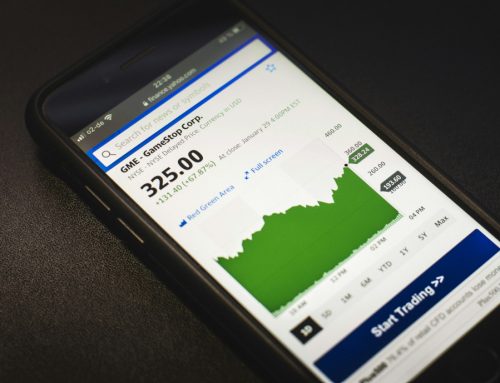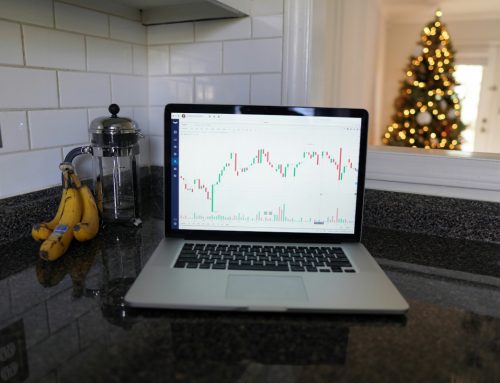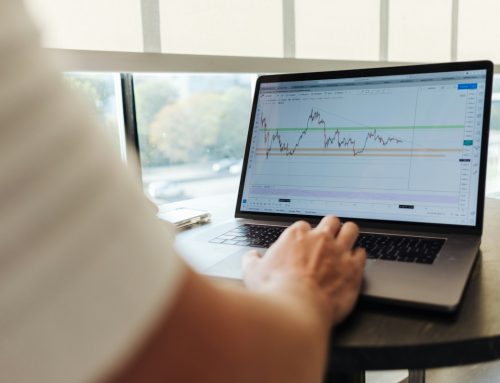So, you had yourself a pretty good year trading and made a decent profit. Nicely done. But now comes the worst part of making money – paying taxes on it.
You probably already know that you owe some swing trading taxes, but how much should you anticipate having to pay? And, do you have to pay taxes on unrealized gains? How do you file your taxes as a swing trader?
You no doubt have questions about swing trading taxes – and we’re here to simplify things for you. We’ll teach you everything you need to know about filing your taxes as a swing trader, including the dreaded capital gains tax. First, though, we need to discuss how taxes vary for businesses and individuals.
Featured Courses:
Are You Filing Taxes As A Business Or Individual?
It’s likely that you’re going to file your taxes as an individual investor. But, the question then becomes – is swing trading your profession? If so, you’ll owe self-employment taxes to the IRS. But if you have a full or part-time job, you can declare any extra income you made on your standard tax return.
However, some individuals decide to consider themselves full-time traders to unlock the tax benefits that come along with this. By getting taxed as a business rather than an individual, you’ll gain the opportunity to write off certain expenses.
You can write off computer hardware and software used in executing your trades. Moreover, you can deduct expenses from your home office. These include the basics like a desk, chair, and the wifi. But, you can also write off a portion of your electric bill along with the cost of the room itself in rent/mortgage.
We’ll get into capital gains tax later on – but investors filing as a business gain an edge here, too. With all that said, swing traders may have a harder time qualifying than day traders. This is because you might not trade every day. As such, you may be forced to pay taxes the same way every other investor does.
Swing Trading Taxes Explained
Many hobbyist traders who cashed out on crypto and meme stocks in recent years had no idea they’d end up having to pay huge capital gains tax the following year. It’s important that you set aside any profit you realize in trading. The last thing you want is to be caught unprepared when the IRS comes knocking for their share the following calendar year.
But what type of taxes do swing traders have to pay, exactly? Capital gains taxes.
The Capital Gains Tax
Anytime you make a profit on a trade, you owe capital gains taxes. Capital gains just refer to income you earned as the result of a sale. When you sell stocks, a house, a piece of physical art (or even NFT), or a business for a lump sum of money, you will owe capital gains tax.
So how are capital gains taxes calculated? It depends on how long you held your stock before making the sale. There are short-term capital gains and long-term capital gains. The tax rates for each will differ greatly. If you held your investments in the stock market for less than a year, you owe short-term capital gains tax. This will be taxed at your individual income tax rate: which can vary between 10%-39.6%.
However, if you held your investment in the stock market for more than a year, then you would pay long-term capital gains tax. The long-term capital gains tax can be as low as 0%. While this is rare, even the most extreme of capital gains taxes cap out at around 15%. You can likely see the advantages in holding your investments long-term from a taxation standpoint. However, as a swing trader, this is not really going to apply to you either. You’ll typically pay the higher short-term capital gains tax.
But, where do you file this information?
How To File Taxes As A Swing Trader
Now that you know whether you’re going to file your taxes as an individual or full-time trader/business, and you know whether you owe short-term or long-term taxes, you can easily get an idea of what you owe. Simply find your tax bracket and run the numbers.
When it comes time to actually file your taxes, you’ll usually declare your investment income on the IRS Form 1040. You’ll report the income of Schedule D. You may also need to complete Form 8949. This shows the IRS your specific transactions throughout the year, giving them a reference to tie to your income.
We know that dreaded feeling when you get your taxes filed and discover you owe thousands of dollars. You can offset this feeling by making quarterly payments based on your profit from the previous year – this will prevent you from paying a huge lump sum all at once. If you make a little more the following year, you only owe that incremental increase. If you make a bit less, you’ll get your money back.
If you were not fortunate enough to make a profit in the previous year, you can file for capital losses on your taxes instead. Swing traders can take a maximum capital loss of $3,000 per year. If your losses were greater than $3,000, you’ll roll over the excess into forthcoming years. Hopefully, your next year of trading goes better and you’ll be reporting a profit instead. To help you with this, consider investing in a stock prediction tool. This can be written off as an expense and will help you win more trades.
Follow Wash Sale Regulations
If you aren’t already, you should familiarize yourself with wash sale regulations. These regulations were put into place to prohibit bad faith investors from gaming the system, so to speak.
Some traders will sell off their position in a stock for a loss, and then repurchase the same stock at the same/similar price within 30 days. Why? Because these losses can be claimed as capital loss for tax purposes. If the IRS sees you doing this, you’ll be unable to claim the loss from that sale on your taxes.
Final Thoughts On Swing Trading & Taxes
We highly encourage you to pay a tax professional to help you file your statements. This becomes even more important the more trades you execute and the more profit you make. But with that said, you have a better understanding of how you are to handle your taxes as a swing trader. It’s not overly complicated.
Just remember to save portions of your profit for when the IRS comes to get their cut of your money. You can also make tax season less stressful by making quarterly estimated payments.
And, if you’re tired of reporting losses year after year, re-evaluate your swing trading strategy. You can make investing simple through the VectorVest stock forecasting software. You can easily find swing trading opportunities in our prebuilt searches, or look up an individual stock for our recommendation. We give you a clear “buy, sell, or hold” for each stock. With this software in your arsenal, you’ll win more trades and have no choice but to declare a profit in the coming years.
Featured Courses:
What you should do next…
- Get our latest blogs delivered right to your inbox, subscribe to our newsletter.
- The market moves fast! Get our most current evaluation of this stock with our FREE stock analysis tool.
- Looking for stock picks? Not sure if now is the right time to buy/sell? For a limited time, enjoy the full benefits of a 30-day subscription to VectorVest for only $9.95 (usually up to $139/month) . Get access to our full list of screeners showcasing our top stock picks that tell you exactly what to buy, when to buy, and when to sell.









Leave A Comment